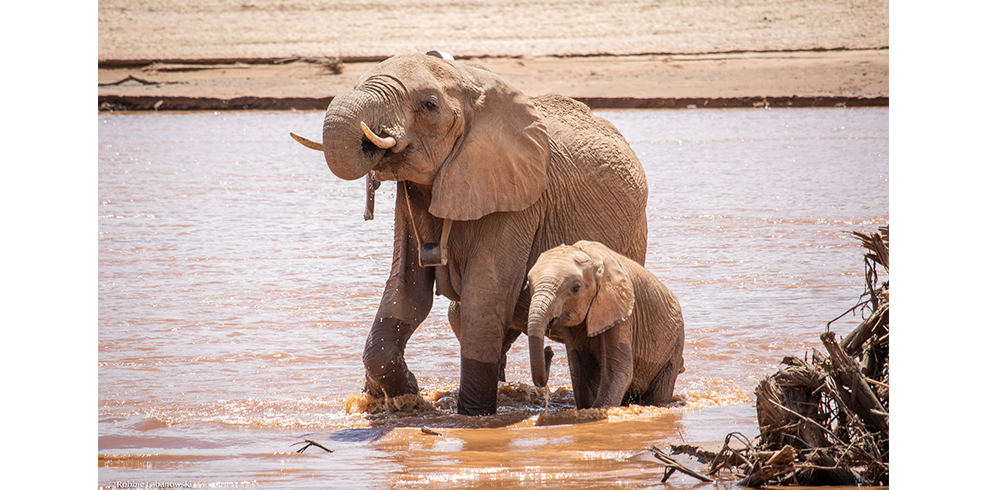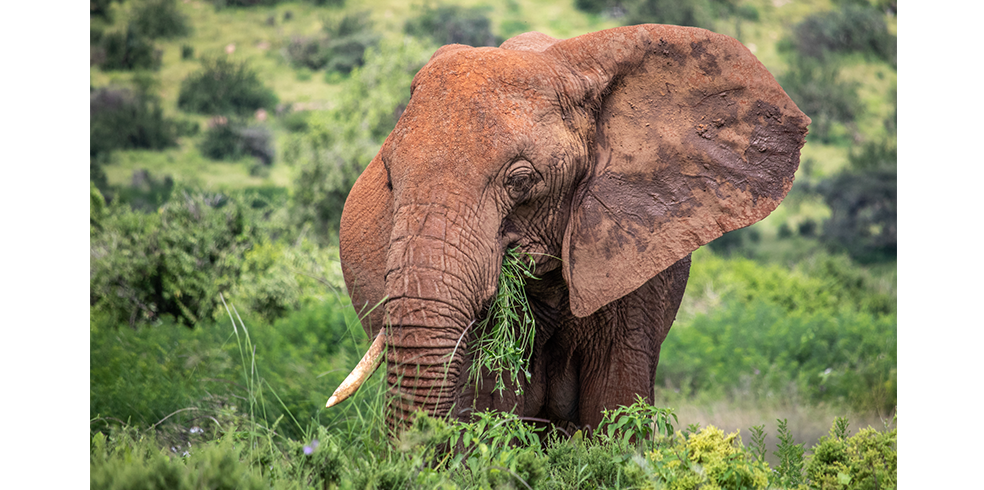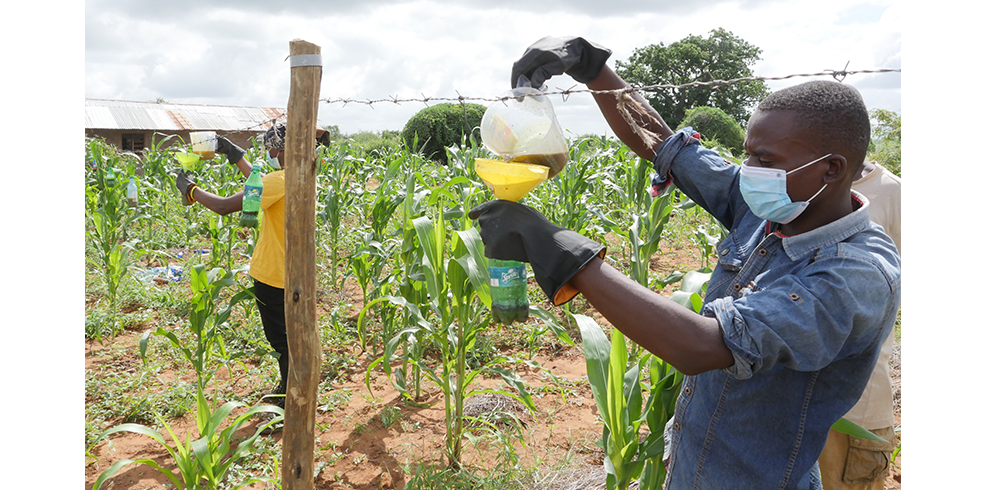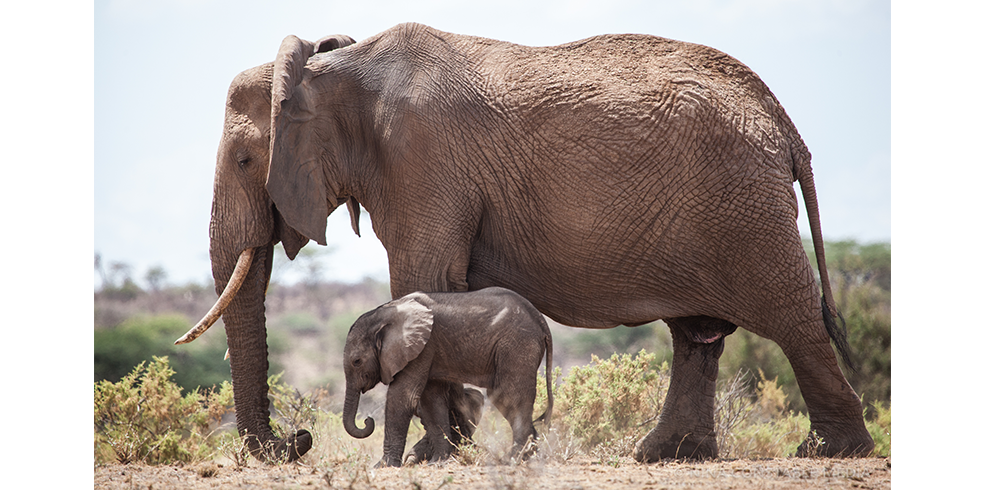The better we understand elephants, the more we can find ways to help them. Work recently published by Save the Elephants researchers gives a glimpse not only of how we are deepening our insight into the world of elephants and how this can help them, but also how studying elephants could help humans.
What happens to the bodies and minds of baby elephants when they lose their mothers? Can the elephants’ legendary sense of smell be used to keep them from raiding farms? And can elephants teach us how to avoid cancer, as they do? These questions have all been explored in peer-reviewed papers published in July and August this year.
In the first study, researchers working with Save the Elephants in northern Kenya, in partnerships with San Diego Zoo Wildlife Alliance and Colorado University, showed that elephants orphaned by the loss of their mothers find solace in their friends, much like bereaved people. The findings, published in Communications Biology, offer new insight into how living with peers may contribute to elephants’ survival, especially as the threat of human-wildlife conflict and drought continues to escalate.
Stress hormones in dung were collected from 36 orphans in Samburu and Buffalo Springs National reserves and analysed. The research team expected the motherless elephants to be more stressed, but were surprised to find that, in the long-term, friendships seem to have helped them to compensate.

Orphans like Soutine, pictured here with her calf, have been observed socialising with different family groups in Samburu © Robbie Labanowski/Save the Elephants
Writing in Ecology and Evolution, lead author, Jenna Parker, STE Research Associate and NSF postdoctoral research fellow in biology with San Diego Zoo Wildlife Alliance, said: “We hypothesized we would find evidence of sustained higher stress hormone secretion in orphans because we knew firsthand just how important the mother-calf bond is in elephant society. What we found encouraged us. Orphans did not show higher concentrations of stress hormones than non-orphans in the long-term, and it seems that increasing interactions with age mates may help to regulate their stress response.”
In another paper, published in Conservation Physiology, researchers reported how a physiological consequence of orphaning – stunted growth – previously discovered in humans and chimpanzee orphans, had also been found in elephants. The new study shows that orphaning stunts the growth of African elephants by an estimated average of 13 centimeters.
The research, conducted by Colorado State University, Save the Elephants and San Diego Zoo Wildlife Alliance, found that orphans are shorter for their age than non-orphans. Stunted growth is of special concern for endangered elephants because growth positively correlates with fitness.
Says lead author Jenna Parker, “While non-orphans spend their days very near to their mother for at least the first nine years of life, orphans have lost their mother’s constant protection, guidance and companionship.The difficulties of losing this vital relationship are measurable, as orphan elephants who were weaned at the time of their mother’s death are significantly shorter than non-orphans of the same age.”
Meanwhile, work on the molecular biology of elephants promises new avenues for treating cancer in people. Scientists from seven research institutions including the University of Oxford and the University of Edinburgh, have shed light on how elephants manage to suppress cancer. Elephants – and some other large-bodied animals – have less cancer than you would expect given the number of cells they have in their bodies.
Using pioneering bioinformatic modelling they investigated how elephants use multiple copies of genes that code for the cancer-suppressing p53 protein to stop tumours before they start. While all other mammals, including humans have only two versions of the gene, researchers discovered that elephants have twenty, each of which gives slightly different protection.
The study, published in the journal, Molecular Biology and Evolution, provides exciting new insights into the molecular interactions in elephant cells, and could in the development of cancer treatments for humans.
Co-author Professor Fritz Vollrath, Department of Biology, Oxford University and chair of Save the Elephants’ board, said: ‘This intricate and intriguing study demonstrates how much more there is to elephants than impressive size and how important it is that we not only conserve but also study these signature animals in minute detail. After all, their genetics and physiology are all driven by evolutionary history as well as today’s ecology, diet and behaviour.’

Elephants like Cyclone, pictured here, have unique properties in their genes which provide resistance to cancers. © Robbie Labanowski/Save the Elephants
And finally, it appears a ‘smelly elephant repellent’ could help provide protection from crop raiding elephants. New trials of a foul-smelling liquid made from locally sourced ingredients, including rotten eggs and dung and chilli, were conducted in 40 farms in Uganda and Kenya to find methods to mitigate elephant crop-raiding.
The aptly named ‘Smelly Elephant Repellent’ was so potent it drove elephants away from crops and significantly reduced crop-raiding on the farms. While not a panacea – heavy rainfall can dilute the effects, and elephants may habituate – the technique is one of a toolbox of solutions that can be deployed by subsistence farmers to ease their situation.
The research, published in Diversity, was conducted by WildAid and Save the Elephants and scientists say the repellent could offer an affordable pathway to mitigating crop-raiding.
Save the Elephants’ Research and Science Manager and lead author, Lydia Tiller, said “As human-elephant conflict increases across the continent, there is an urgent need for affordable, effective and easy to produce mitigation methods that protect not only elephants but the communities that live alongside them. Smelly elephant repellent has the potential to help farmers across Kenya and Uganda by significantly reducing elephant crop-raiding. In fact, the trials of the repellent were so effective that almost all of the farmers involved in the study said they would use the repellent again.”

STE’s Tsavo field team filling bottles with the smelly elephant repellent concoction © Simatwa Ngachi/Save the Elephants
Top image: A group of orphaned elephants in Shaba National Reserve, northern Kenya © Jane Wynyard/Save the Elephants


